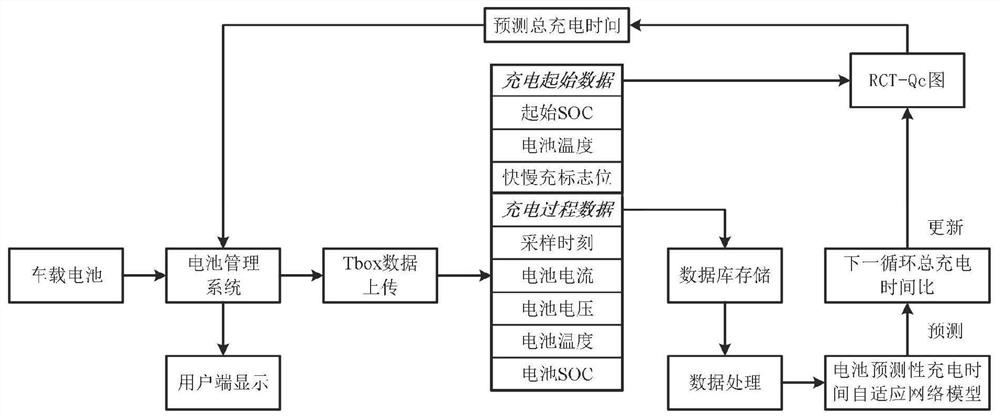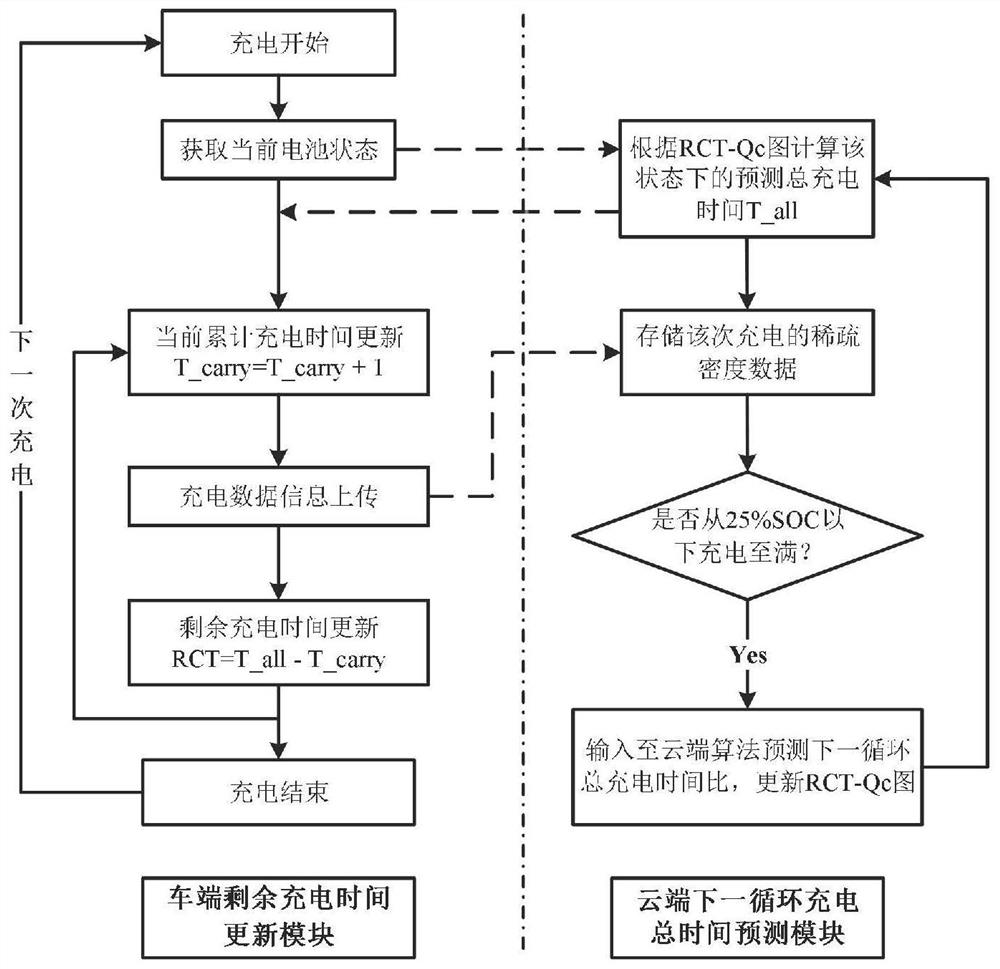Electric vehicle residual charging time prediction method and system based on cloud sparse charging data
A technology of charging time and sparse data, applied in the field of electric vehicles, can solve the problems such as the inability to guarantee the full coverage of the battery life cycle by data samples, the inability to accurately predict the remaining charging time of the vehicle, and the jumping of the remaining charging time, so as to avoid uncertainty. and low life cycle coverage problems, improve user experience and vehicle brand competitiveness, and determine the effect of travel plans
- Summary
- Abstract
- Description
- Claims
- Application Information
AI Technical Summary
Problems solved by technology
Method used
Image
Examples
Embodiment
[0070] According to the method for predicting the remaining charging time of the electric vehicle's full life cycle based on cloud sparse charging data provided by the present invention, the method includes the following steps:
[0071] Step 1: Obtain battery charging test data, preprocess it into a sparse input data set after cleaning; establish a battery predictive charging time adaptive network model based on the preprocessed data, divide the training set and test set, and cross-validate and compare the model Statistical evaluation, and finally deploy the trained battery predictive charging time adaptive network model on the cloud, see for details figure 1 .
[0072] Step 1.1: Use a large number of cycle test data of any type of battery when it leaves the factory (or do a large number of cycle aging tests based on this type of battery. The discharge part of each cycle test is guaranteed to be from full charge to zero charge at the same rate, and the charge part of each cycl...
PUM
 Login to View More
Login to View More Abstract
Description
Claims
Application Information
 Login to View More
Login to View More - R&D
- Intellectual Property
- Life Sciences
- Materials
- Tech Scout
- Unparalleled Data Quality
- Higher Quality Content
- 60% Fewer Hallucinations
Browse by: Latest US Patents, China's latest patents, Technical Efficacy Thesaurus, Application Domain, Technology Topic, Popular Technical Reports.
© 2025 PatSnap. All rights reserved.Legal|Privacy policy|Modern Slavery Act Transparency Statement|Sitemap|About US| Contact US: help@patsnap.com



